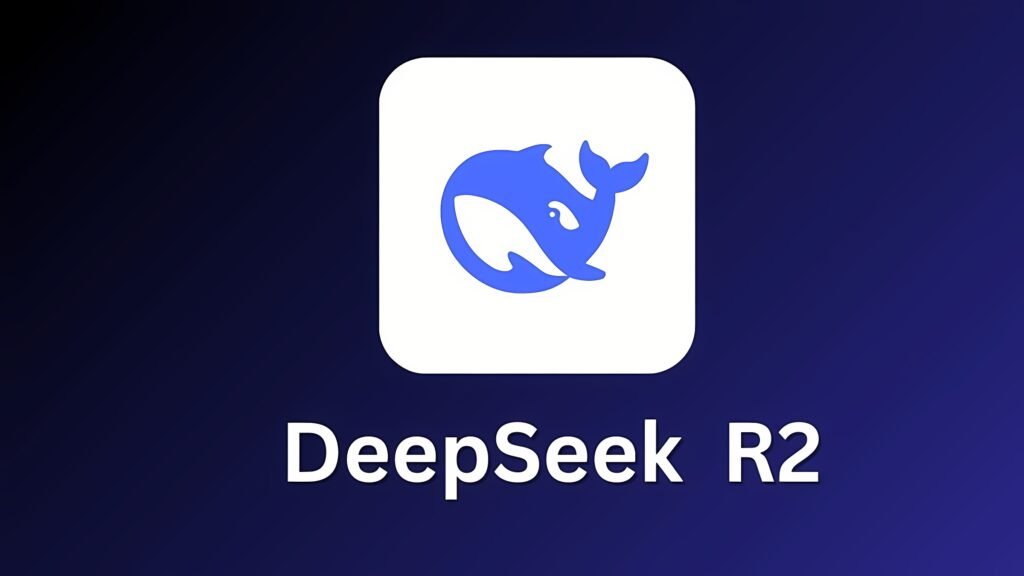DeepSeek-R2 is attracting significant attention in the AI technology community due to leaked information about its superior capabilities and development strategy aimed at achieving autonomy. This large language model is seen as the next step forward for DeepSeek, a prominent Chinese AI company known for its efficient and low-cost products. By adopting advanced technologies, DeepSeek-R2 promises to bring substantial improvements, helping to expand AI applications in various fields such as natural language processing, logical reasoning, and business support. These upgrades not only focus on performance but also emphasize sustainability and reducing dependence on imported technology, reflecting the trend of AI globalization with diversified supply sources.
Projected Launch Schedule for DeepSeek-R2

Information about the launch schedule for DeepSeek-R2 has emerged through interactions with DeepSeek's current AI model, indicating that this model may be officially announced at the end of August 2025. Initially, some sources predicted an earlier timeframe, such as in May 2025, but that has not happened, leading to growing anticipation from the community. The delay could be related to the final refinement process to ensure the highest quality. Upon launch, DeepSeek-R2 is expected to be integrated into API platforms, allowing users easier access. This not only marks an important milestone for DeepSeek but also contributes to the vibrant competition in the AI market, where new models continuously emerge to meet the increasing demands for speed and accuracy.
Impressive Improvements in Architecture and Performance
DeepSeek-R2 nổi bật với việc áp dụng kiến trúc Mixture of Experts (MoE) tiên tiến hơn so với các phiên bản trước. Kiến trúc MoE hoạt động bằng cách phân chia mô hình thành nhiều “chuyên gia” riêng biệt, mỗi chuyên gia xử lý một phần nhiệm vụ cụ thể, giúp tối ưu hóa tài nguyên và tăng tốc độ suy luận. Trong DeepSeek-R2, mạng lưới cổng (gating network) được nâng cấp để thông minh hơn, cho phép mô hình xử lý hiệu quả các khối lượng công việc phức tạp mà không lãng phí tài nguyên. Điều này dẫn đến khả năng mở rộng lên đến 1.2 nghìn tỷ tham số, gần gấp đôi so với DeepSeek-R1 vốn chỉ có khoảng 671 tỷ tham số. Tuy nhiên, không phải tất cả tham số đều hoạt động đồng thời; mô hình sử dụng cách tiếp cận hybrid MoE với khoảng 78 tỷ tham số hoạt động, giúp duy trì hiệu suất cao mà không làm tăng chi phí vận hành quá mức. Những cải tiến này giúp DeepSeek-R2 vượt trội trong các nhiệm vụ đòi hỏi suy luận sâu, như phân tích dữ liệu lớn hoặc tạo nội dung sáng tạo, so với các mô hình truyền thống chỉ dựa vào kiến trúc dày đặc.
Use of Huawei Hardware and Steps Toward AI Autonomy
A standout feature of DeepSeek-R2 is its complete training on Huawei's Ascend 910B chip, marking a significant shift in China's AI industry. The Ascend 910B chip is designed to handle AI tasks with FP16 performance reaching 512 PFLOPS at 82% utilization, equivalent to about 91% of the performance of Nvidia's A100 cluster. Huawei's computing cluster not only provides powerful computational power but also optimizes coordination between the Kunpeng CPU and Ascend NPU, minimizing latency in task distribution and increasing speed by an additional 4%. Choosing this domestic hardware helps reduce dependence on U.S. technology, especially in the context of geopolitical tensions affecting AI supply chains. This is not just a technical strategy but also contributes to promoting technological independence, encouraging other countries to invest in separate AI hardware to diversify the global ecosystem.
Low Training Costs and Economic Benefits
The training cost of DeepSeek-R2 is estimated to be up to 97.3% lower than that of OpenAI's GPT-4, thanks to the combination of efficient Huawei hardware and internal optimization techniques. Specifically, using the Ascend 910B chip helps minimize energy consumption and computation time, while advanced training methods like MoE optimization reduce resource waste. As a result, DeepSeek can offer API services at more affordable prices, possibly around 0.07 USD per million tokens, compared to higher rates from competitors like OpenAI or Anthropic. This opens up opportunities for small and medium-sized enterprises to access high-end AI technology without bearing a heavy financial burden. Moreover, this business model can promote competition, forcing large companies to adjust prices and improve services, leading to more sustainable development for the entire industry.
Comparison with Other AI Models and Competitive Potential
When compared to leading models like OpenAI's GPT-4 or GPT-5, DeepSeek-R2 has fewer parameters (1.2 trillion versus over 1.8 trillion), but in compensation, the MoE architecture makes it more efficient in handling real-world tasks. For example, DeepSeek-R2 can compete with Qwen3 – another AI model from China – thanks to domestic hardware optimization and a focus on high performance at low cost. While GPT-4 stands out with its multitasking capabilities and massive training data, DeepSeek-R2 emphasizes economic viability and inference speed, making it more suitable for enterprise applications such as chatbots, data analysis, or healthcare support. Compared to DeepSeek-R1, this new version significantly improves scalability and language processing, potentially achieving higher scores in benchmarks like MMLU or HumanEval. Overall, DeepSeek-R2 is not just an AI model but also represents the trend of democratizing technology, where lower costs help AI become more widespread in emerging markets.
Long-Term Impact on the AI Industry and Society
The launch of DeepSeek-R2 could change the landscape of the AI industry by promoting supply diversification and reducing monopolies from U.S. companies. With low costs, this model will encourage global startups and businesses to adopt AI more widely, from education to healthcare. However, this also poses challenges regarding AI safety, such as controlling bias in training data or information security. In the global context, DeepSeek-R2 contributes to the AI race among nations, emphasizing the role of domestic hardware in building sustainable ecosystems. Ultimately, such developments not only enhance technology but also promote discussions on AI ethics, ensuring benefits are distributed fairly across society.
Nguồn: Gizmochina